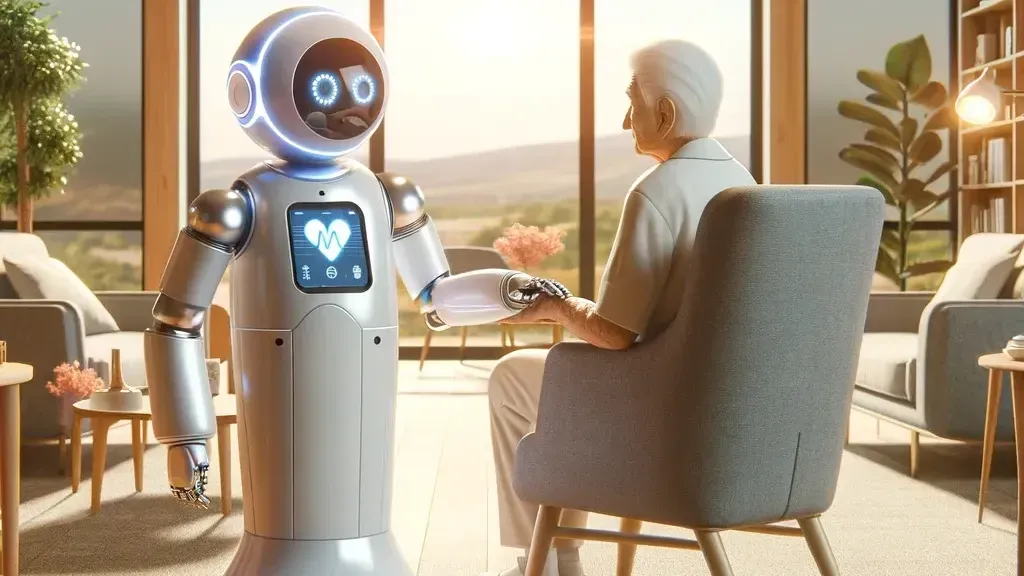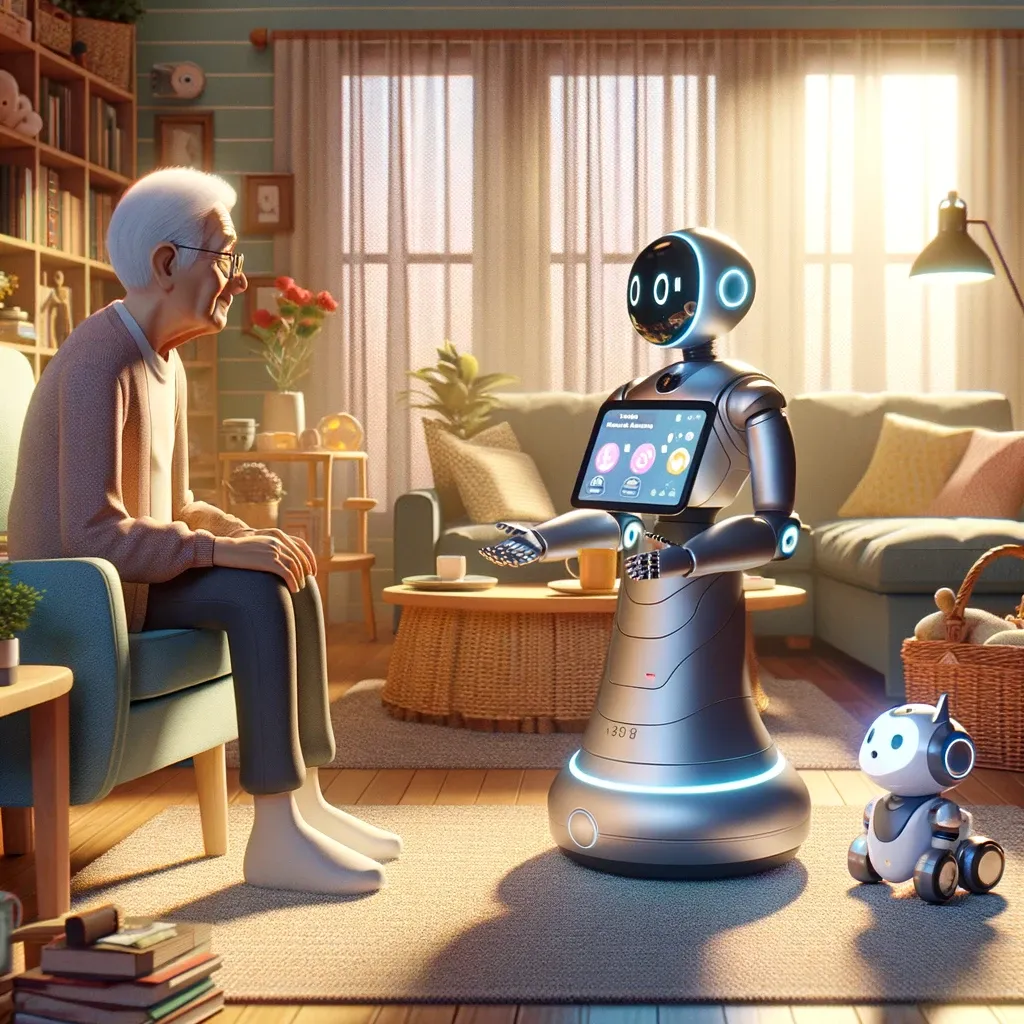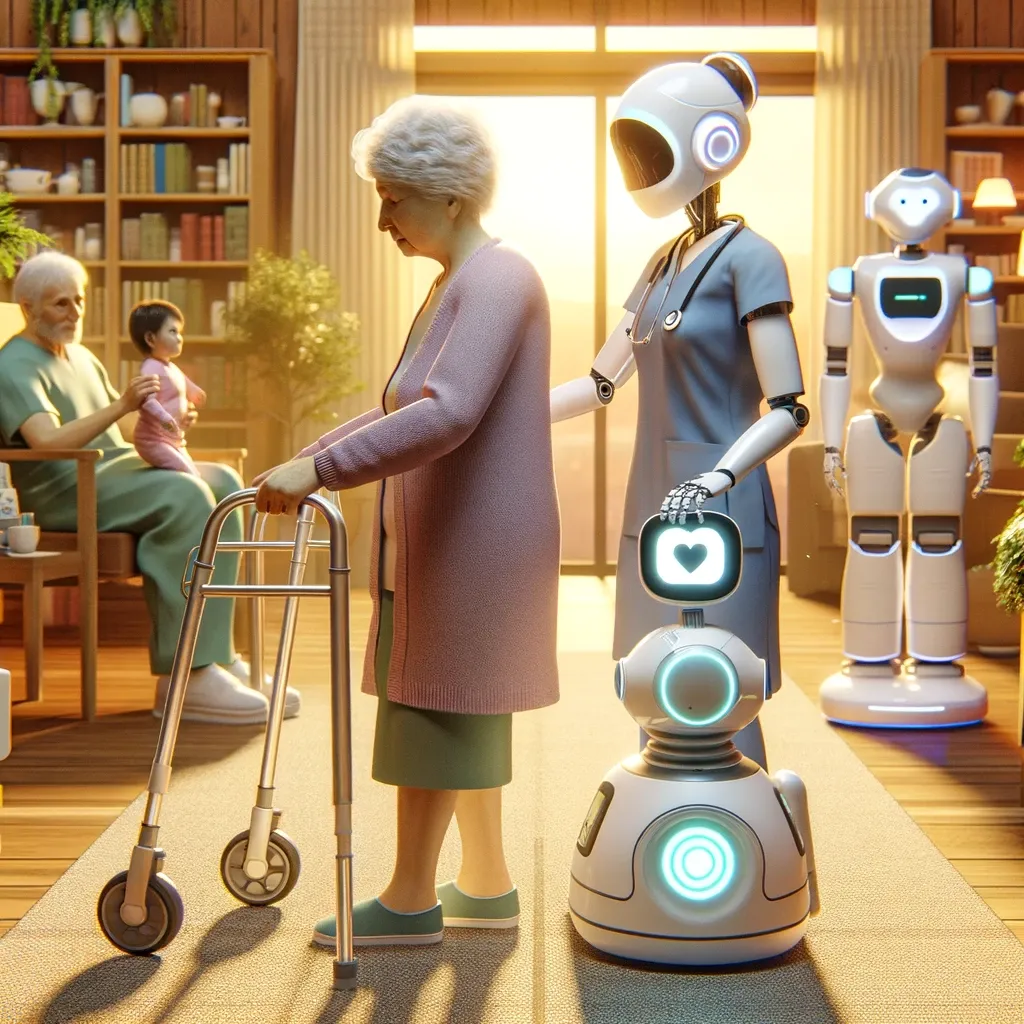Care Robots for the Elderly: The Future of Aging and Independence
Discover how care robots are transforming elderly care, offering both physical and emotional support in modern facilities. These robots assist with health monitoring, daily activities, and provide companionship, enhancing the quality of life for older adults.

The growing elderly population worldwide presents significant challenges and opportunities in healthcare and elderly care sectors. As we aim to improve the quality of life for older adults, technology, especially in the form of care robots, has emerged as a promising solution. This article delves into how care robots are revolutionizing elderly care, supporting residential care facilities, and working alongside medical robots and human care workers to enhance the lives of the elderly.
Bridging the Gap: Robots and Residential Care Facilities
In residential care facilities, the introduction of care robots has begun to transform the landscape of elderly care. These robotic devices are designed to complement the work of human care workers by performing physical tasks, monitoring vital signs, and even providing social interaction. By taking over routine and physically demanding tasks, robots allow human caregivers to focus more on the personal and emotional needs of the elderly, thereby enriching the care provided.
The Role of Medical Robots and Human Interaction
Medical robots, a subset of care robots, are specifically designed to assist with health-related tasks. From monitoring blood pressure to reminding older adults to take their medication, these robots ensure that the health needs of the elderly are met promptly and efficiently. However, the success of such robots hinges on their ability to work in harmony with human caregivers. This collaboration ensures that the care delivered is not just medically sound but also emotionally supportive, highlighting the importance of human interaction in elderly care.
Real Life Abilities and Socially Assistive Robots
The real-life abilities of care robots are continually being tested and improved, moving beyond the hyped-up image often portrayed in media. Socially assistive robots, for example, are designed to engage with elderly people through conversation, physical exercise, and even pet therapy. These interactions help maintain the cognitive and physical well-being of the elderly, proving that robots can extend beyond mere physical assistance to become companions and motivators for maintaining a healthy lifestyle.

The Invaluable Support of Family Members and Caregivers
Family members and informal caregivers play a crucial role in the care of the elderly. Care robots are emerging as vital tools in supporting these individuals by alleviating the physical demands of caregiving. Robots capable of lifting people or assisting with exercise routines can reduce the physical strain on family caregivers, allowing them to spend more quality time with their loved ones. This partnership between robots and family members is crucial in providing holistic care that meets both the physical and emotional needs of the elderly.
The Evolution of Robotic Devices in Elderly Care
The development of care robots is a multidisciplinary effort involving insights from computer science, robotics companies, and the healthcare sector. These robotic devices are becoming increasingly sophisticated, capable of autonomous navigation, detecting falls, and even understanding voice commands. This evolution signifies a shift towards more interactive and responsive robots that can adapt to the unique needs of each individual, making personalized care a reality.
The Promise of Robotic Exoskeletons and Physical Care
Robotic exoskeletons represent a significant advancement in providing physical care to the elderly. These devices assist with mobility, enabling older adults to perform physical tasks that would otherwise be impossible. By supporting physical exercise and independence, robotic exoskeletons not only improve the physical health of the elderly but also boost their confidence and desire to live independently.
Social Robots: Enhancing Emotional Well-being
The emotional and social aspects of elderly care are as crucial as the physical ones. Social robots, designed to recognize and respond to human emotions and body language, are playing an increasingly important role in addressing the emotional needs of the elderly. These robots can engage in meaningful conversations, provide companionship, and even mimic the behaviors of pets, offering comfort and reducing feelings of loneliness.
Looking Ahead: The Near Future of Elderly Care Robots
As we look to the near future, the potential of care robots in elderly care is immense. With ongoing advancements in artificial intelligence and robotics, the abilities of these robots will continue to expand. The vision is for robots to not only assist with physical and medical tasks but also to offer companionship and emotional support, helping older adults to achieve their wellness goals and enjoy a higher quality of life.
The Impact of Technology on Elderly Care
The integration of care robots into elderly care settings marks a significant shift in how we approach aging and independence. By leveraging the capabilities of robots, we can provide a level of care that was previously unimaginable. From assisting with daily living tasks to promoting physical activity and providing emotional support, robots are set to become an indispensable part of elderly care.
The Synergy of Humans and Robots in Elderly Care
The development and implementation of care robots in elderly care reflect a growing recognition of the need to support an aging population in living independently and with dignity. While robots are not a replacement for human caregivers, they represent a powerful tool that can enhance the care provided by humans. By working in tandem with human care workers, family members, and medical professionals, care robots can help meet the complex needs of the elderly, ensuring their well

Care Robots for the Elderly: Frequently Asked Questions (FAQ)
What are care robots and how do they support elderly care?
Care robots are robotic devices developed to assist elderly people by performing physical tasks, monitoring vital signs, and providing social interaction. They support elderly care by complementing the work of human care workers in residential care facilities, offering both physical and emotional support to older adults.
How do medical robots differ from care robots?
Medical robots are a specific type of care robot focused on health-related tasks, such as monitoring blood pressure or assisting with medication. While all medical robots can be considered care robots, not all care robots are designed for medical tasks specifically.
Can care robots replace human care workers?
No, care robots are intended to augment the care provided by human workers, not replace them. They can take over routine or physically demanding tasks, allowing human caregivers to focus on providing more personalized and emotional support.
What role do family members play in using care robots for elderly care?
Family members often act as informal caregivers and play a crucial role in integrating care robots into the daily lives of the elderly. They can help manage the technology, customize its functions according to the needs of their elderly family member, and ensure that the robots complement the care they provide.
How do socially assistive robots assist in elderly care?
Socially assistive robots are designed to provide companionship, engage in conversation, assist with physical exercise, and even perform pet therapy. They are geared towards improving the mental and emotional well-being of older adults.
What advancements in computer science and artificial intelligence are impacting the development of care robots?
Advances in artificial intelligence (AI) and computer science are crucial for enhancing the capabilities of care robots, enabling them to understand and respond to human emotions, navigate autonomously, and perform complex tasks independently.
Are there any concerns regarding the use of care robots in elderly care?
While care robots offer many benefits, concerns include ensuring privacy, security, and ethical considerations in their deployment. Additionally, there is the challenge of making sure these robots do not lead to reduced human interaction, which is essential for the emotional well-being of the elderly.
What future developments can we expect in the field of care robots for the elderly?
Future developments may include more advanced AI capabilities, better autonomous navigation, improved understanding of human emotions and body language, and more personalized care options. The aim is to create robots that can more effectively support the diverse needs of the elderly population.
How do care robots monitor and assist with physical health?
Care robots can monitor vital signs, remind older adults to take their medication, assist with exercise routines, and detect falls. Some are equipped with robotic exoskeletons to aid in physical mobility and support independent living.
What is the significance of the Alan Turing Institute in the context of care robots?
The Alan Turing Institute, as a leading research center, plays a significant role in advancing the research and development of AI and robotics technology, including care robots. The institute's work can help in shaping the future of how such robots are developed and used in elderly care settings.




